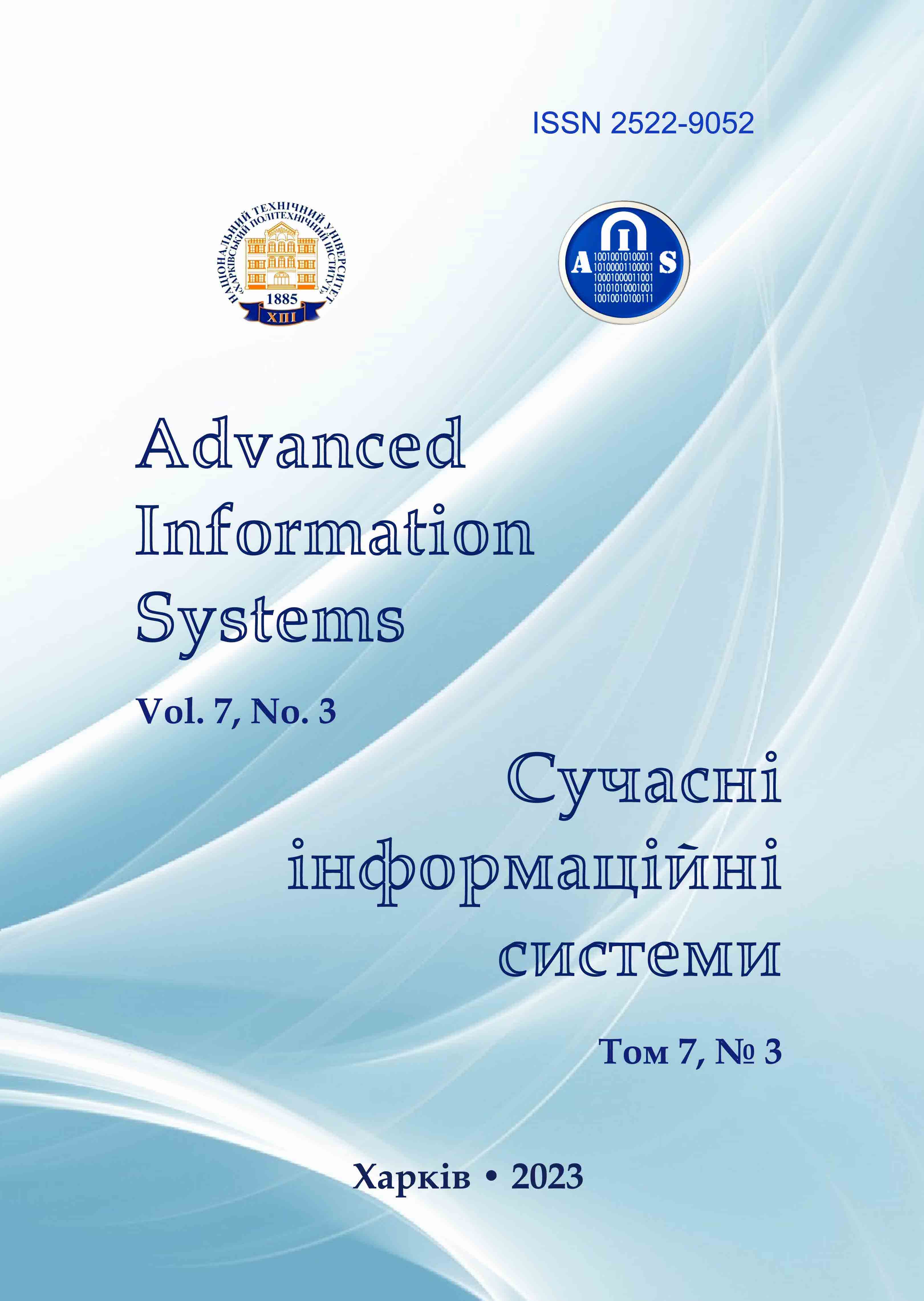Estimation the state of different agricultural cultures with use fractal analysis
Main Article Content
Abstract
Absence general approaches to estimation the state of agricultural cultures from Earth remote sensing (ERS) data shows that the task of estimation changes their state is not decided to the end. The subject of the study in the article is estimation of the state of different type agricultural cultures with use fractal analysis. The object of the study is the spaces pictures satellite Sentinel-2 of different type agricultural cultures. The goal is consideration possibility the use fractal analysis of spaces pictures of different type agricultural cultures for determination changes their state. The following results were obtained. Conducted estimations the state of different agricultural cultures (corn, sunflower, wheat, barley and buckwheat) during all period vegetation with the use fractal analysis their spaces pictures. Construction the field of fractals dimensions is basis fractal analysis of spaces pictures. It is showed that the normal state agricultural cultures is characterized by the increase middle and minimum fractals dimensions (FD) on the initial phases vegetation, by achievement the most values FD on the middle phases vegetation and again by diminishing FD on the late phases vegetation. It is certain that the size middle FD it is possible to distribute the fields by buckwheat and corn and the fields by sunflower, wheat and, barley. Between itself the fields by buckwheat and corn it is possible to divide on duration the most values FD, and the fields by sunflower, wheat and barley between itself to divide the size middle FD and duration their most values practically not possibly. Conclusions. The conducted researches showed that the fractal analysis of spaces pictures allowed to conduct monitoring the state of different type agricultural cultures.
Article Details
References
Tokareva O.S. (2010), Treatment and interpretation the remote sensing of Earth information, TPU, 148 p. available at: https://www.geokniga.org/bookfiles/geokniga-obrabotka-dannyh-distancionnogo-zondirovaniya-zemli-prakticheskie-aspekty.pdf.
Komarova, А.F., Zhuravleva, I.V. and Yablokov, V.M. (2016), “Open-source multispectral remote sensing data for the investigation of plant communities”, Principles of the Ecology, Vol. 17, No 1, pp. 24-62, doi: https://doi.org/10.15393/j1.art.2016.4922.
Orlov, D.S., Suhanova, N.I. and Rozanova, M.S. (2001), Spectral reflectivity of soils and their components, MGU, Moscow, 176 p., available at: https://drive.google.com/file/d/1Xn7OkdAcBzzHYb9TOE8lUqS4x3xsZOuY/view.
Terehin, E.A. (2016), “Geoinformation approach to monitoring and estimation the state of sowing areas with the use satellites information (on the example of the Belgorod region)”, Scientific lists of BelSU. Series are Natural sciences, Vol. 36, No 18(239). pp. 148-155, available at: https://core.ac.uk/download/222447266.pdf.
Spivak, L.F., Terehova, A.G., Vitkovskaj, I.S. and Batirbaeva, M.Zh. (2009), “Use of long-term satellites information of different permission for complex estimation the state of vegetable cover Kazakhstan territory”, Sovremenie problemi distancionogo zondirovanij Zemli iz kosmosa, Vol. 6, No. 2. pp. 450-458, available at: http://d33.infospace.ru/d33_conf/2009,2/450-458.pdf.
Shovengerdt, R.A. (2013), Remote sensing. Models and methods of the images processing, Tehnosfera, Moscow, 592 p., available at: https://www.geokniga.org/books/5231.
Feder, J. (1988), Fractals, Springer, New York US, 263 p., doi: https://doi.org/10.1007/978-1-4899-2124-6.
Doly, G.N., Ivanov, V.K., Kuchuk, G.A. and Pashchenko, R.E. (2006), “Fractal analysis processes, structures and sig-nals”, NEO Ekoperspektiva, Kharkiv, 348 p., available at: https://scholar.google.ru/scholar?hl=ru&as_sdt=0,5&cluster=14416160122446740941.
Marjushko, M.V. and Pashchenko, R.E. (2020), “Fractal analysis of Sentinel-2 satellite imagery for monitoring of agri-cultural crops”, Radioelektronni i komp'juterni systemy, No. 4(96), pp. 34-47, doi: https://doi.org/10.32620/reks.2020.4.03.
(2023), Copernicus Europe’s eyes on Earth, Sentinel-2, available at:
https://www.copernicus.eu/en/about-copernicus/infrastructure/discover-our-satellites.
(2023), Spatial Resolution, ESA Sentinel Online. available at: https://sentinel.esa.int/web/sentinel/user-guides/sentinel-2-msi/resolutions/spatial.
Kronover, R.М. (1995), Introduction to Fractals and Chaos, Jones and Bartlett Publishers, Boston, London, 350 р., available at: https://www.amazon.com/Introduction-Fractals-Chaos-Bartlett-Mathematics/dp/0867204648.
